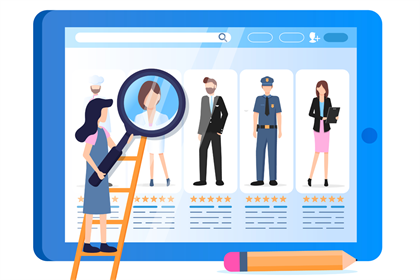
Building an e-commerce website is a challenging task, but with the right tools and guidance, it can be a smooth and efficient process. If you're a Laravel development company or a business seeking Laravel development services, Laravel is an excellent choice for creating a robust and scalable e-commerce platform.
Laravel is a powerful PHP web development framework that provides a solid foundation for building e-commerce websites. Its modular structure, elegant syntax, and a wide range of built-in features make it a popular choice among developers. Here's a step-by-step guide to help you get started with Laravel e-commerce development.
Step 1: Set up the Laravel Environment: Before you begin, make sure you have a suitable development environment set up. Install the latest version of Laravel, a web server (like Apache or Nginx), a database management system (MySQL or PostgreSQL), and any necessary dependencies.
Step 2: Plan Your E-Commerce Features: Next, determine the features you want to include in your e-commerce website. Some common features include product catalogs, shopping carts, checkout processes, payment gateways, order tracking, and user accounts. Make a list of the must-have features and prioritize them based on your business requirements.
Step 3: Choose an E-Commerce Package: Laravel offers several popular e-commerce packages that can save you a significant amount of development time. These packages provide pre-built functionalities for managing products, categories, orders, and more, allowing you to focus on customizing and integrating them into your application.
Step 4: Set Up the Database and Models: Once you've chosen an e-commerce package, set up your database schema and create the necessary models for products, categories, orders, and other entities. Laravel's Eloquent ORM (Object-Relational Mapping) makes it easy to interact with the database and define relationships between models.
Step 5: Build the User Interface: Next, create the user interface for your e-commerce website. Laravel's Blade templating engine simplifies the process of creating reusable views and layouts. You can also leverage front-end frameworks like Vue.js or React to build modern, responsive, and interactive user interfaces.
Step 6: Implement Authentication and Authorization: E-commerce websites require secure authentication and authorization mechanisms to protect user data and transactions. Laravel provides built-in features for user authentication, password resets, and role-based access control, making it easy to implement these essential security measures.
Step 7: Integrate Payment Gateways: To process online payments, you'll need to integrate one or more payment gateways into your e-commerce website.
Step 8: Test and Deploy: Before launching your e-commerce website, thoroughly test all features and functionalities, including the checkout process, payment gateway integration, and user account management. Once you're satisfied with the testing results, deploy your Laravel e-commerce application to a production server.
By following this step-by-step guide, you can leverage the power of Laravel and its robust ecosystem to create a feature-rich, secure, and scalable e-commerce website. Whether you're a Laravel development company offering Laravel development services or a business seeking Laravel web development expertise, this guide will help you streamline the development process and deliver a top-notch e-commerce solution.
Leave a Reply
You Might Like Also

Build Your Own Freelance Marketplace with a Freelancer Clone Script

How Online Booking Software Can Boost Customer Retention?











